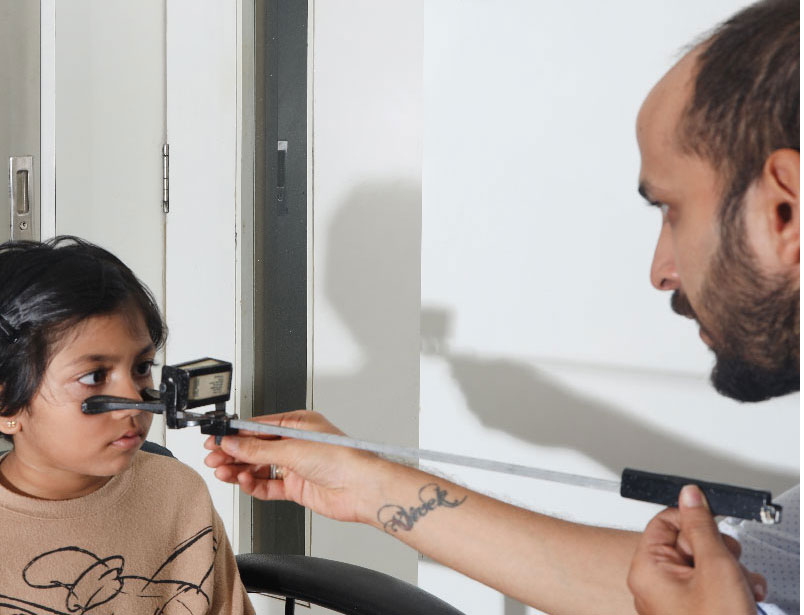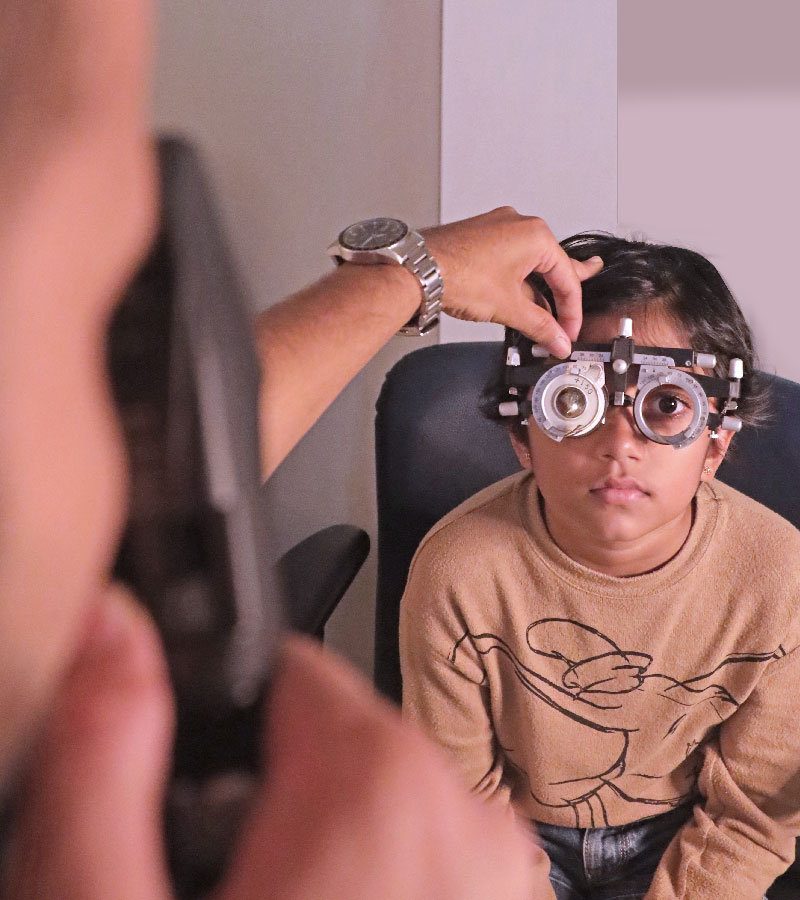The set of eye exercises that is useful in patients with squint Vision Therapy.
for strabismus aim at regaining child’s ability to use both eyes together (fusion), to restore 3 dimensional vision, to prevent or treat lazy eye / Amblyopia, to improve Hand eye coordination (visuomotor skills)
The objective of squint eye exercises or exercises for crossed eye is to delay the need of surgery or increase the success of squint correction after surgery and in some situation avoids strabismus surgery by improving the coordination of eyes, so that the child’s Binocular vision and Stereo acuity remain intact.
These exercises can be done at home as home based exercises and office based exercises which are done in a clinical set up.
HTS iNet/ BYNOCS:
It is a computerized home vision therapy system. It is a fun and easy way to learn a range of eye exercises for squint correction which can train a child's eye to work together. It’s like playing a game on the computer.
The plan for squint correction therapy depends on the abnormality found on (BVA) binocular vision assessment. Initial tasks of playing are easy, which computer automatically increases the challenge based on your improvement.
These exercises are completely based on an individual Binocular problem. It is usually played 5 times a week, and then gradually reduced to maintenance therapy for a few weeks to reinforce the working of the eye together.
Brock String:
It is an instrument used for treatment of convergence insufficiency and other anomalies of binocular vision. It is used to develop skills of convergence as well as to disrupt suppression of one of the eyes.
Set Up:
- Tie one end of the string to a doorknob.
- Position one bead at the end of the cord close to the doorknob. This is the far �?xation bead.
- Place the middle �?xation bead about 10 inches from you.
- Place the near fixation bead about 4 inches from you.
- Stand directly in front of the doorknob facing it. Hold the cord up to the bridge of your nose so that the cord is stretched tight between your nose and the doorknob.
Procedure:
- Look at the near fixation bead. Keep this bead single as you look directly at it. If the near bead is double this indicates an eye teaming problem. If this occurs, move the near bead closer or further away until you see it as a single bead_ the near bead should be moved closer and closer as the task becomes easier. Eventually the near bead should be only one inch from the bridge of your nose.
- As you look at the near �?xation bead you should see two strings, each of which appears to come from your eyes. If your �?xation of the bead is accurate, the two strings should appear to meet exactly at the bead forming an “X”(See illustration). As the bead is moved one inch from your nose, the two strings should appear to meet exactly at the bead forming a “V”.
- Shift �?xation to the middle �?xation bead and then to the far �?xation bead and repeat. If your �?xation of the far bead is accurate, the two strings should appear to meet exactly at the bead forming a “V”.
- Change the location of the �?xation beads and again repeat.
- Try to be aware of other objects in your field of View as you practice.
- Slowly turn your head from side to side through an angle of about 45 degrees maintaining your vision of the two strings at all times.(if you turn too far one string will disappear.)
Home based eye exercises for lazy eye –
Dichoptic treatment for better binocular vision and active occlusion therapy
- Dichoptic training requires the child to wear red green goggles (that usually costs < 1000/-) and play a game on the mobile phone or touch screen device. The game e.g STEREO BLOCK is available free on play store in Android market.
- Dichoptic eye exercises for lazy eye
- Few prior settings in the game gives the child a visual improvement equivalent to patching the good eye.
- Stereo blocks game for amblyopia treatment
- Stereo blocks game for amblyopia treatment – red green setting
- We have found DOMO nHance RB560P Anaglyph Passive Red and Blue 3D Glasses from Amazon India to be cost effective and very effective (No financial conflicts with us)
- For more details visit latest treatments of lazy eye
vision ‘Bynocs’ at Jyotirmay
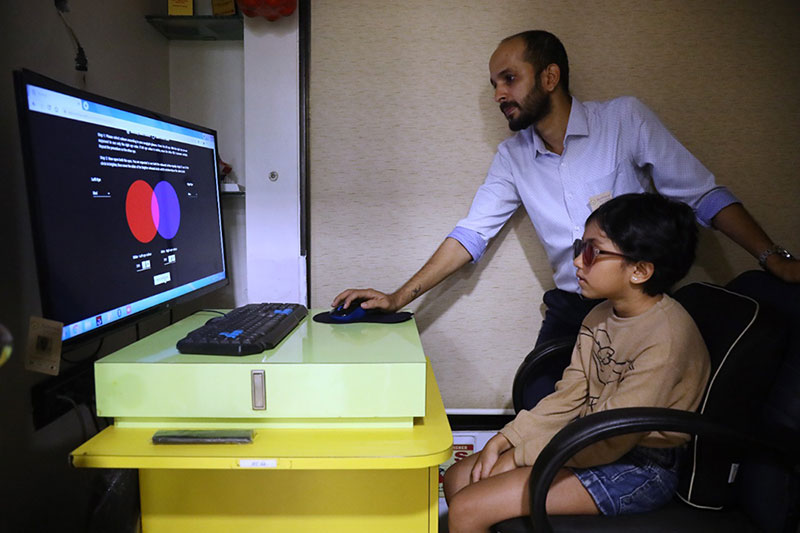
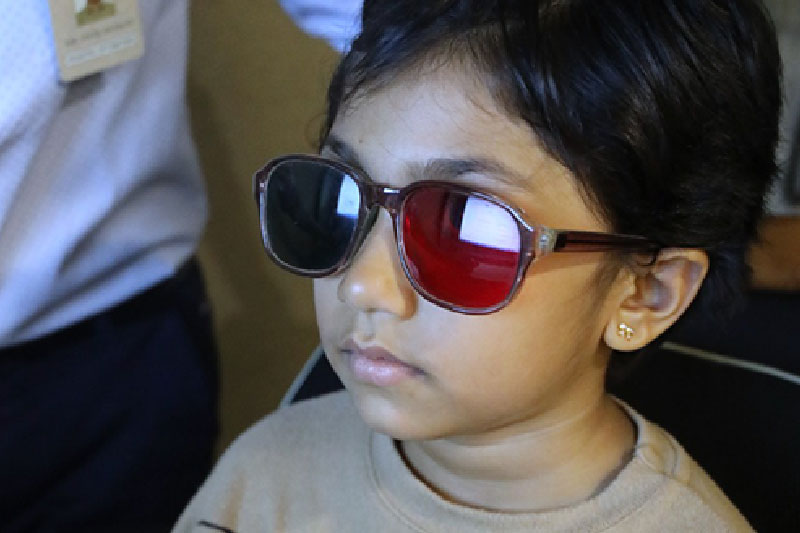
- Patients with lack of binocular vision – suppression on worth 4 dot or Bagolini test for near and/or distance
- Patients with unilateral lazy eye or amblyopia
- Patients with squint before and after squint correction
- Patients with double vision
- Patients with poor depth perception
- Patients with unequal vision
- Patients with unequal spectacle powers
- Patients with asthenopia (eye related headache)
- Patients with unilateral cataract or adult cataract planning a surgery to achieve spectacle freedom with monovision / blended vision
- Patients with color vision defects
- Patients with problems of contrast sensitivity
- Patients with eye related headache
- Assessment of near and distance vision in logMAR (near logMAR charts are usually not available)
- Assessment of contrast vision
- Assessment of binocular vision – size and depth of suppression scotoma
- Assessment of near and distance 3D vision (distance 3D vision assessment charts are usually not available)
- Assessment of accommodation (facility and amplitude)
- Assessment of fusion (convergence and divergence)
- Assessment of aniseikonia
- Assessment of reaction time (saccades and pursuits)
- Assessment of squint (heterophoria) angle
- Assessment of eye movements (modified Hess screen)
- Assessment of asthenopia (asthenopia symptom survey)
- Assessment of color vision
- Assessment of fixation (eccentric fixation)
- Eye exercises for the lazy eye / amblyopia and binocular vision therapy (Dichiptic therapy)
- Eye exercises for antisuppression and restore binocular vision -fusion
- Eye exercises for the development of fusional amplitudes, before and after squint correction to increase chances of success
- Eye exercises for the patients with eye related headache (asthenopia)
- Calculating the prisms for patients with double vision
- Eye exercises to develop 3D vision
- Dichoptic therapy for patients with eccentric fixation.
- Finding the dominant eye and choosing the IOL design or power for unilateral cataract or planning blended vision – monovision
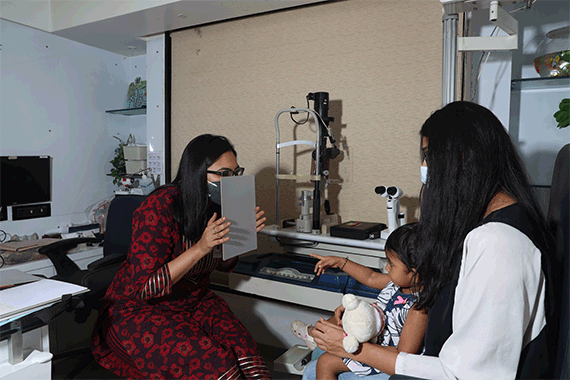
Vision Testing In Toddlers Cardiff Visual Acuity Cards
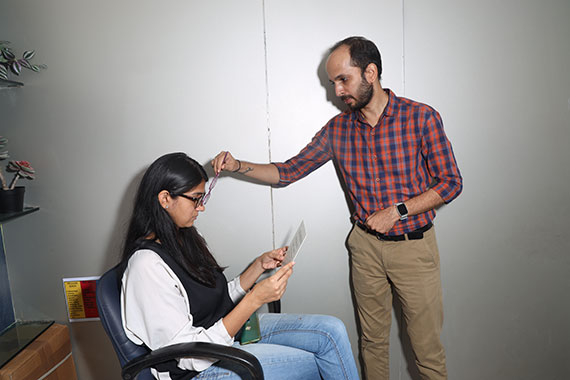
Accommodative Facility Testing
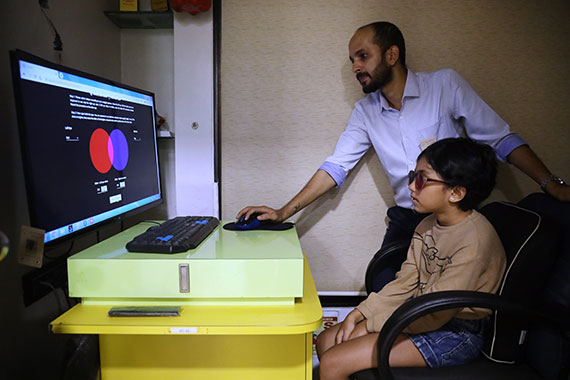
Dichoptic therapy for Amblyopia management
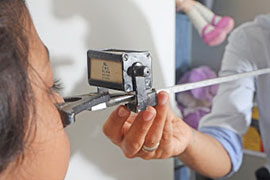
Assessing the tone and functions of the muscles of the eye:
Checking convergence using a RAF scale

